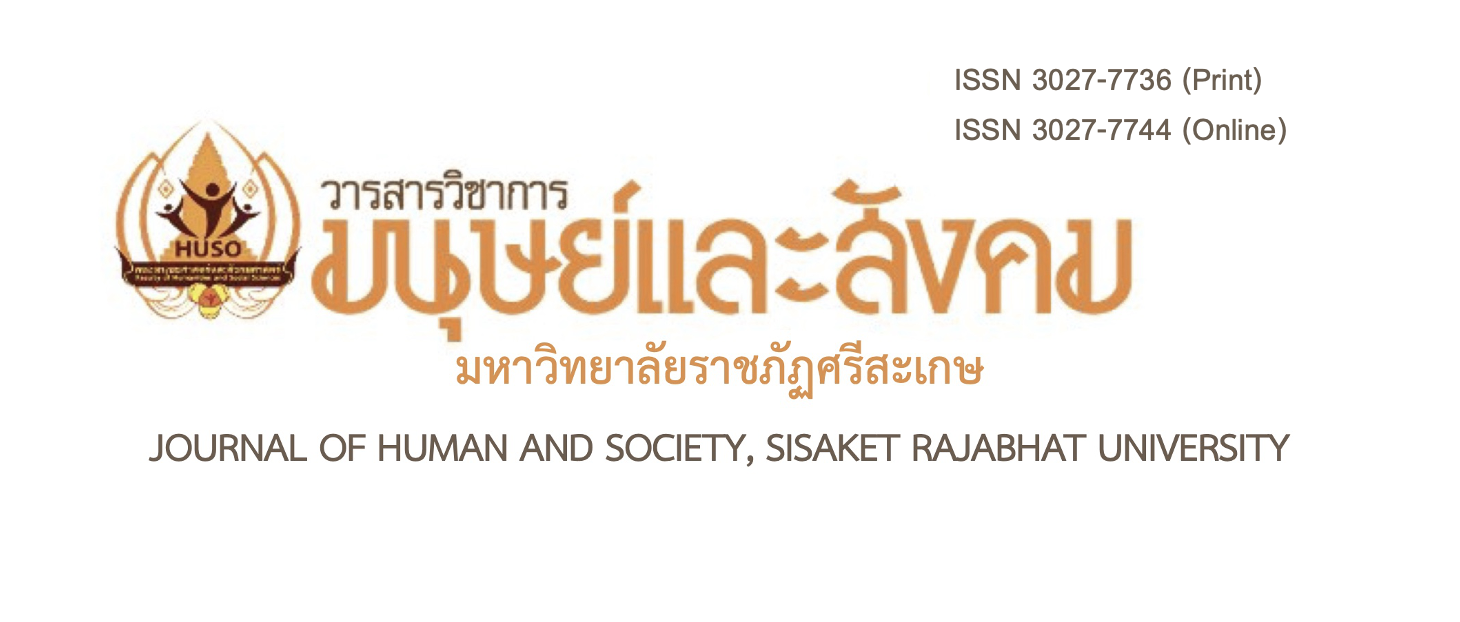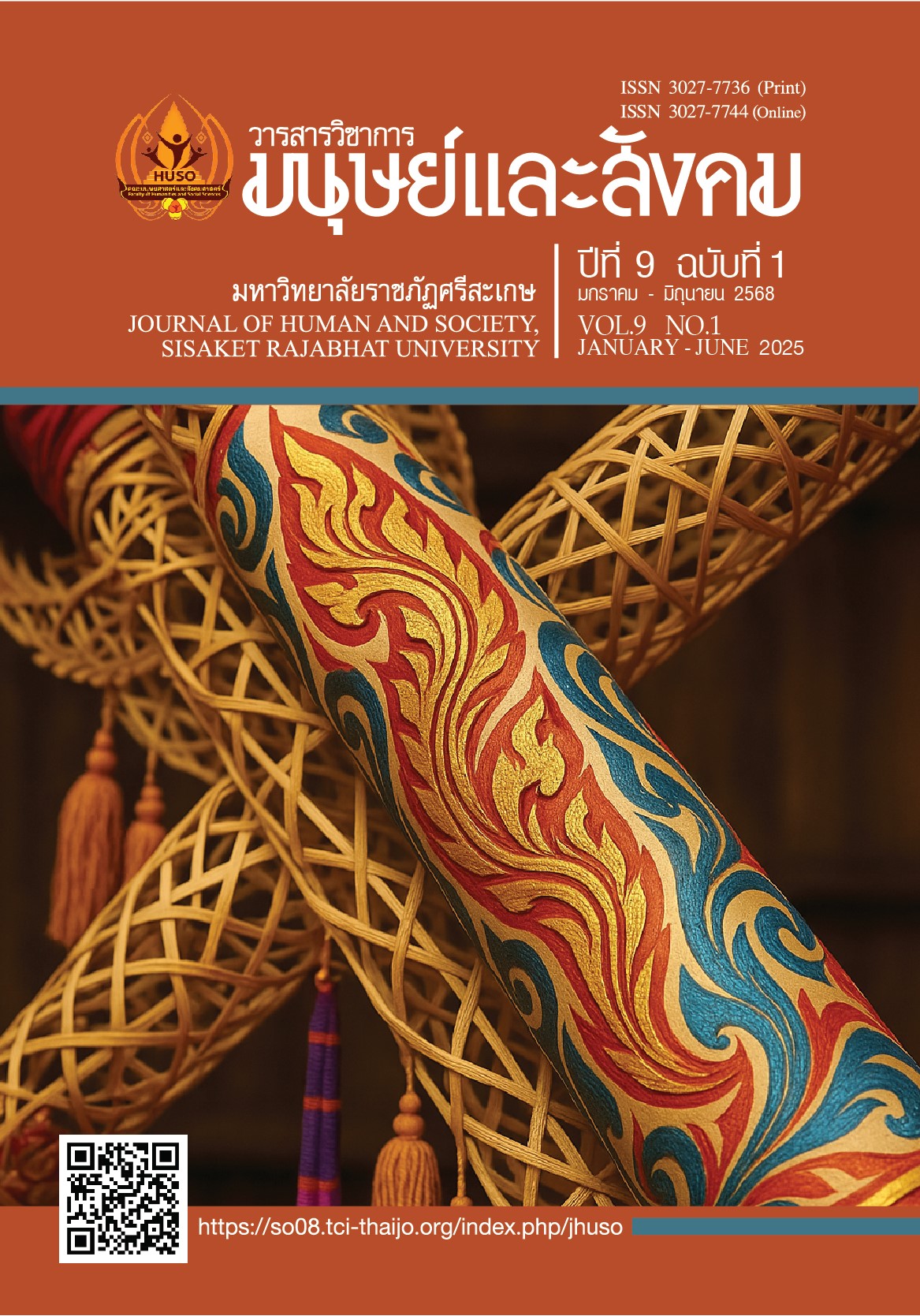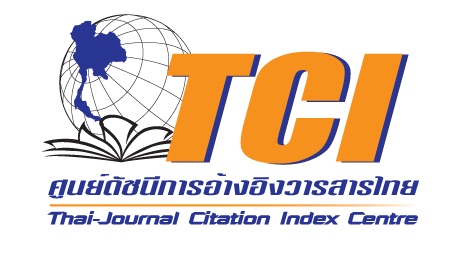ทฤษฎีเบลคันโตของจีนจากสถาบันวิจัยโอเปร่าแห่งมหาวิทยาลัยปักกิ่ง: กรณีศึกษาของโอเปร่าเจียงเจี๋ย
คำสำคัญ:
ทฤษฎีเบลคันโตจีน, สถาบันวิจัยโอเปร่า, มหาวิทยาลัยปักกิ่ง, โอเปร่าเจียงเจี๋ยบทคัดย่อ
โอเปร่าเจียงเจี๋ยเป็นโอเปร่าจีนที่โดดเด่นซึ่งเล่าถึงชีวิตและการต่อสู้ของเจียงเจี๋ย นักปฏิวัติหญิงในช่วงสงครามกลางเมืองจีน โอเปร่านี้มีเนื้อเรื่องเกี่ยวกับความจงรักภักดี การเสียสละ และความกล้าหาญ โดยมุ่งเน้นไปที่ความมุ่งมั่นของเจียงเจี๋ย ต่อเหตุผลของเธอและความวุ่นวายทางอารมณ์ที่เธอต้องเผชิญในการต่อสู้กับการกดขี่
งานวิจัยชิ้นนี้เป็นการวิจัยเชิงคุณภาพ ใช้วิธีการวิจัยโดยการทบทวนวรรณกรรมและควบคู่กับการวิจัยภาคสนามเพื่อวิเคราะห์ทฤษฎีเบลคันโตของจีนจากสถาบันวิจัยโอเปร่าแห่งมหาวิทยาลัยปักกิ่ง กรณีศึกษาของโอเปร่าเจียงเจี๋ย
ผลการวิจัยพบว่า ทฤษฎีเบลคันโตของจีนที่นำไปใช้โดยจากสถาบันวิจัย
โอเปร่าแห่งมหาวิทยาลัยปักกิ่ง กรณีศึกษาของโอเปร่าเจียงเจี๋ยเผยให้เห็นถึงการรวมกันของเทคนิคการร้องเพลงและภาษากายอันมีบทบาทสำคัญในการเสริมสร้างความลึกซึ้งทางอารมณ์และการแสดงของตัวละคร โดยเฉพาะอย่างยิ่งการควบคุมพลศาสตร์เสียงอย่างมีฝีมือ เช่น การเปลี่ยนแปลงในความเข้ม เสียง และจังหวะ ช่วยให้นักแสดงสามารถถ่ายทอดสถานะอารมณ์ที่ซับซ้อนได้อย่างมีประสิทธิภาพ ซึ่งสะท้อนถึงโลกภายในของตัวละคร นอกจากนี้ การศึกษาเน้นย้ำถึงวิธีที่การประสานระหว่างการแสดงออกทางเสียงและการเคลื่อนไหวทางกายภาพสร้างการแสดงที่มีชีวิตชีวาและน่าสนใจมากขึ้น งานวิจัยนี้ย้ำถึงความสำคัญของหลักการเบลคันโตในการสร้างโอเปร่าปฏิวัติ ซึ่งแสดงให้เห็นถึงประสิทธิภาพในการบรรลุความสอดคล้องทางอารมณ์ที่ลึกซึ้งและผลกระทบทางศิลปะ
เอกสารอ้างอิง
Tao, Y. (1994). A draft history of Western music exchange. Beijing Encyclopedia of China Publishing House.
Wang, X. (2024). Exploration and Development of Original Chinese Operas: Taking Ye Xiaogang's Ode· Farewell as an Example. Artist, 7(1), 155-157.
Luo, Q. (2019). On the Convergence Tendencies of National Singing and Bel Canto in Vocal Education [Master's Thesis]. Sichuan Normal University.
Li, X., & Chen, Y. (2019). Barriers to Cultural Integration in Vocal Performance: A Study of Traditional and Contemporary Techniques. Opera Research Review.
Smith, R. (2020). Emotional Expression in Vocal Techniques: Balancing Tradition and Innovation. International Journal of Vocal Studies, 3(2), 112-116.
Gao, M. (2017). Attempting to Discuss the Integration of National, Bel Canto, and Pop Singing Methods in Song [Master's Thesis]. Xi'an Conservatory of Music.
Jiang, Sh. (2017). The Origins and Development of Bel Canto. Art Evaluation, 5(3), 70-72.
Johnson, A. (2021). Cultural Fusion in Music: Case Studies and Strategies. Journal of Cross-Cultural Music Studies, 2(1), 80-97.
ดาวน์โหลด
เผยแพร่แล้ว
รูปแบบการอ้างอิง
ฉบับ
ประเภทบทความ
สัญญาอนุญาต
ลิขสิทธิ์ (c) 2025 วารสารวิชาการมนุษย์และสังคม มหาวิทยาลัยราชภัฏศรีสะเกษ

อนุญาตภายใต้เงื่อนไข Creative Commons Attribution-NonCommercial-NoDerivatives 4.0 International License.







